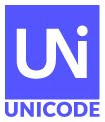The beta test will give CLDR contributors a chance to try out the new features of the tool, without having to worry about the potential impacts on CLDR itself. If all seems to be going well during the beta test period, we plan to open the survey tool for "official" data submission on or about Thursday, May 8.
We plan to allow data submission until June 19, and data vetting until July 3. Version 26 is scheduled to be released in September 2014.
Highlights for the CLDR 26 release:
- Microsoft has agreed to join the CLDR project as a major contributing partner.
- The survey tool user interface has undergone a major overhaul, thanks to the hard work of our friends at Apple. Hopefully, users will find the interface more intuitive and easier to navigate.
- Google and IBM have also contributed significantly, especially in the area of improving performance. We have also upgraded our hardware, so we are hoping for less down-time and fewer interruptions to your work.
- New types of fields and structure, including many additional types of units. See new features in Version 26.
- The first version to support the new characters in the Unicode encoding standard, Version 7.0, due for release in July, 2014.
For known issues in the beta version, see Known Issues.
Anyone is welcome to try out the tool, although only those with accounts will be able to make changes. To get an account, or if you have forgotten your login ID or password, please contact your CLDR TC representative.
If you don't belong to a Unicode member organization, and are a native speaker of a language other than American English, you can obtain a guest account.
Any bugs with the tool can be reported to the CLDR committee by opening a new ticket at http://unicode.org/cldr/trac/newticket
Thanks in advance for your participation in the Unicode CLDR project!



